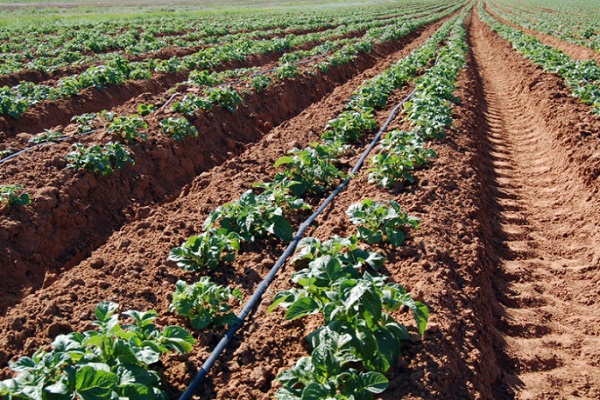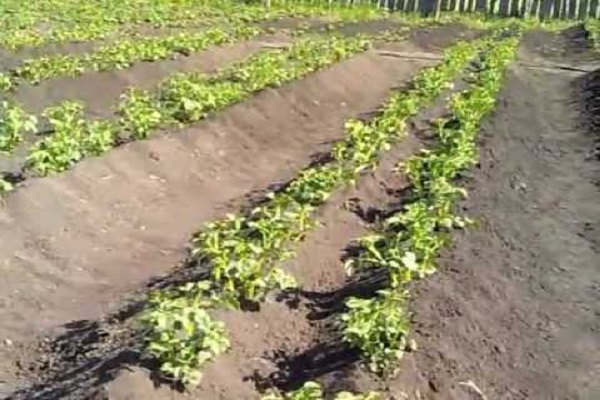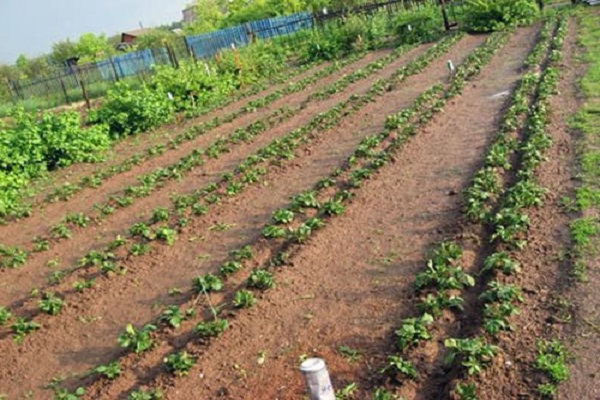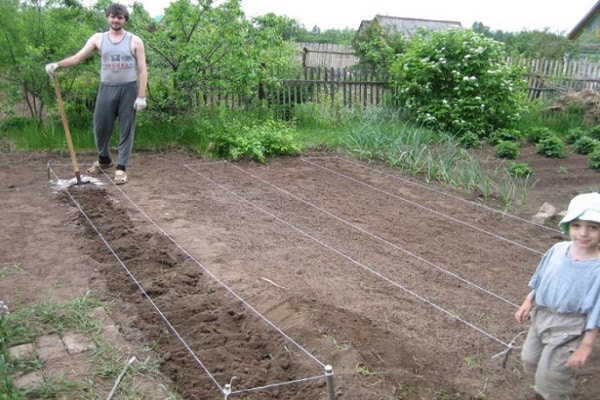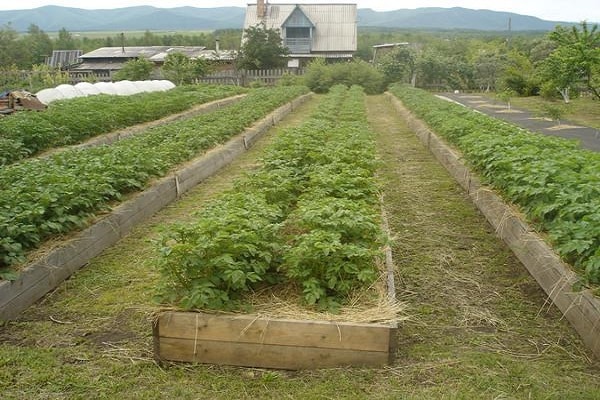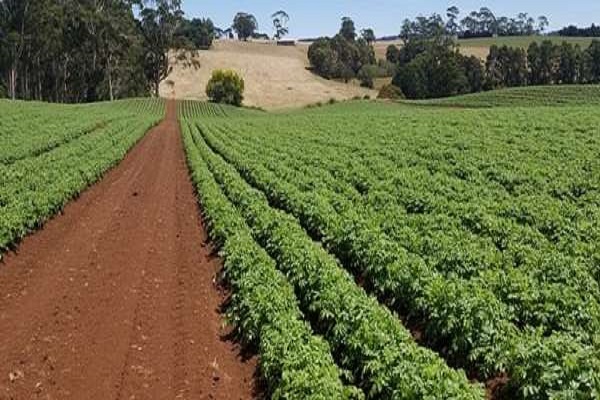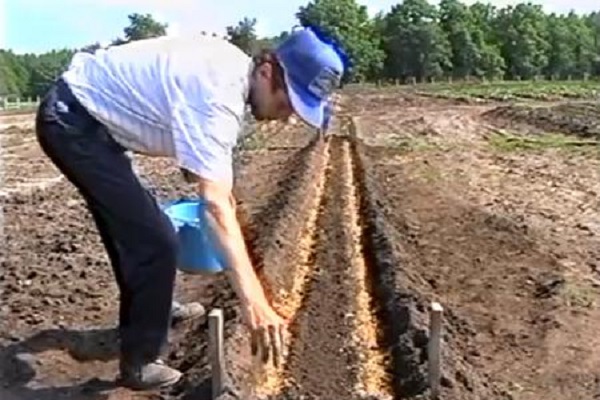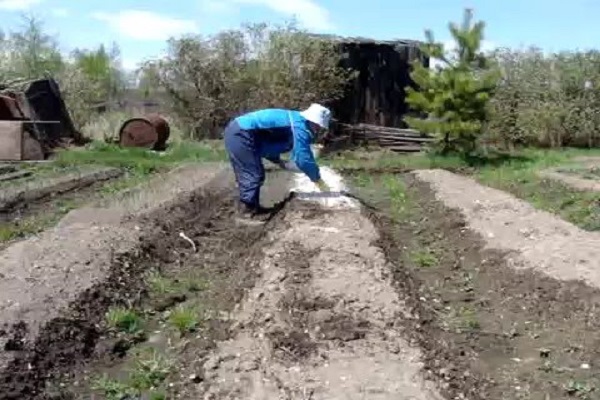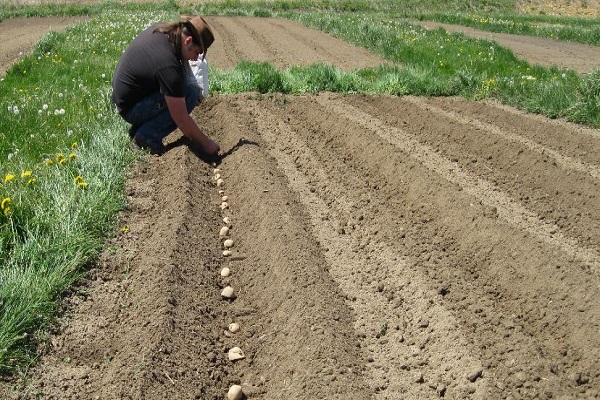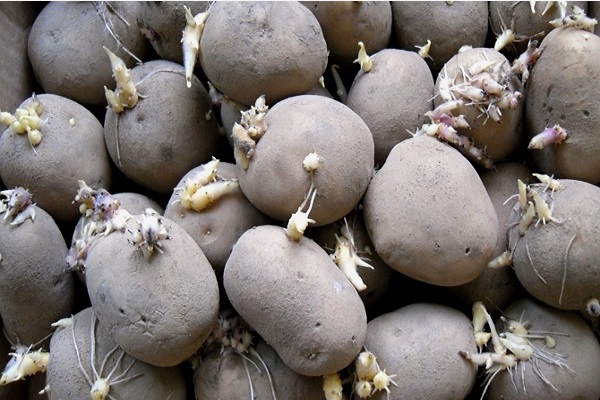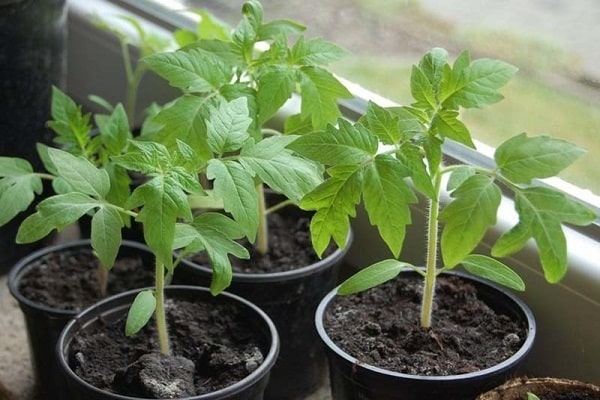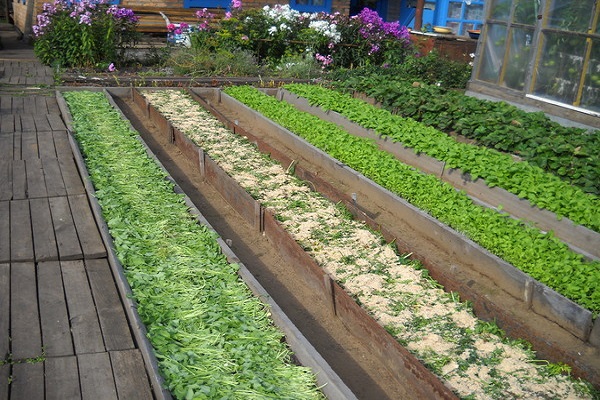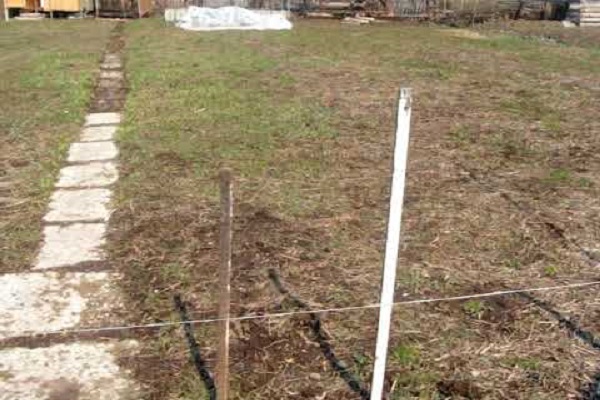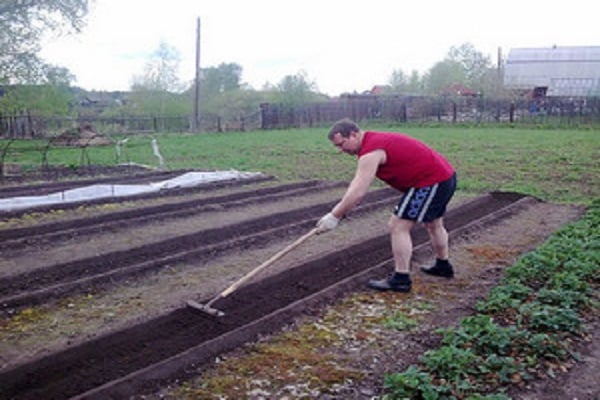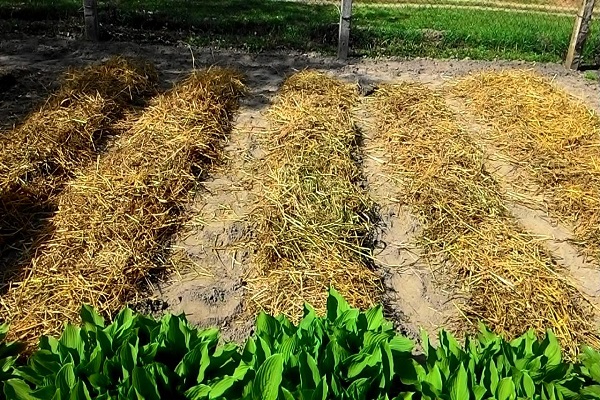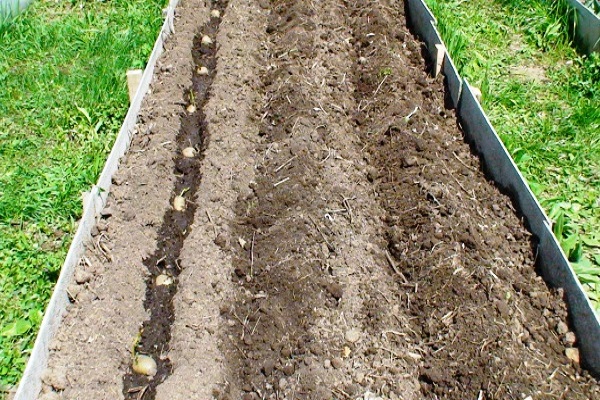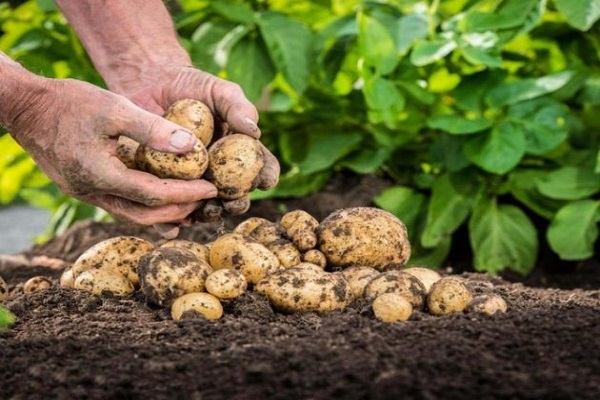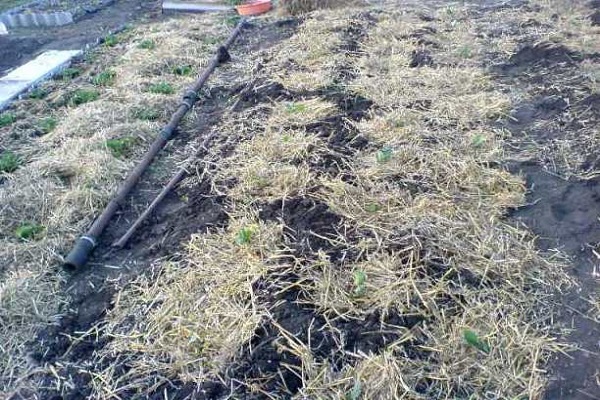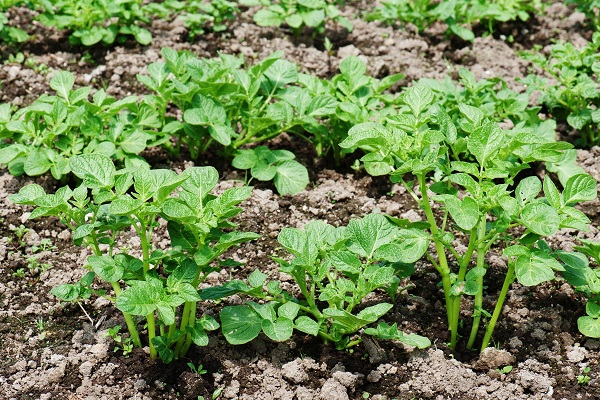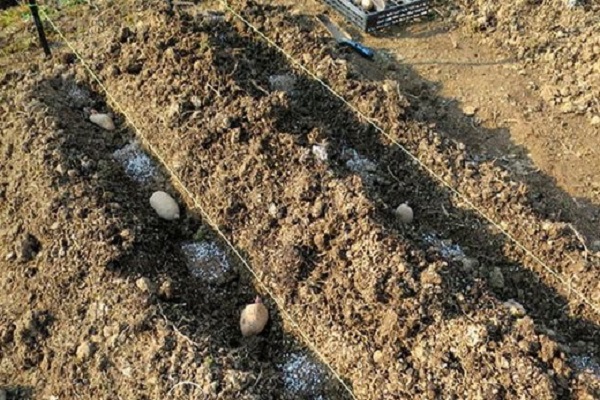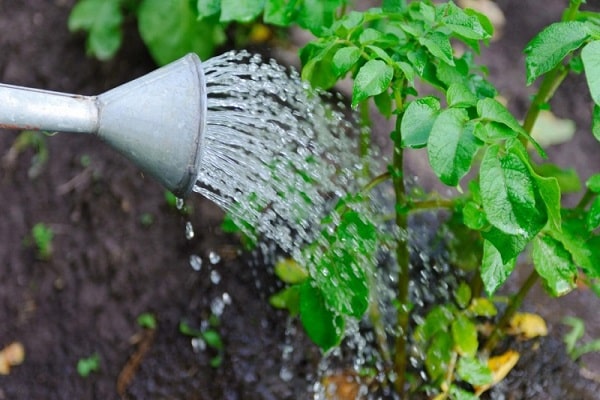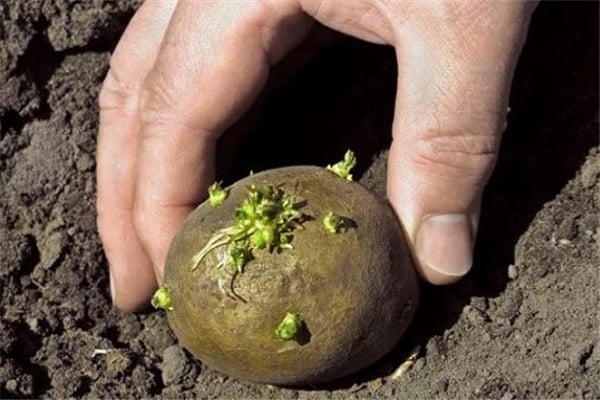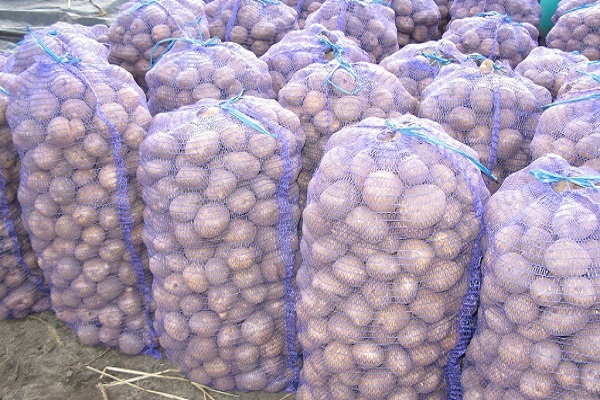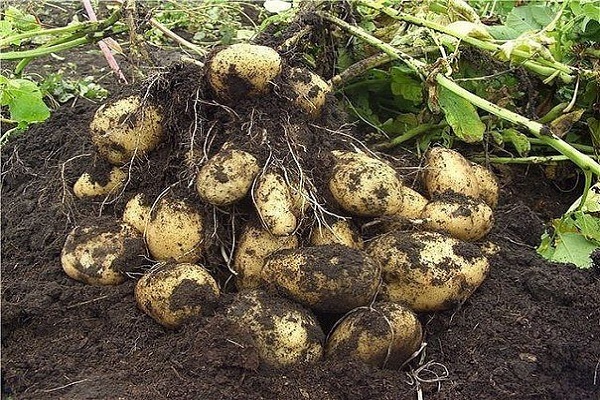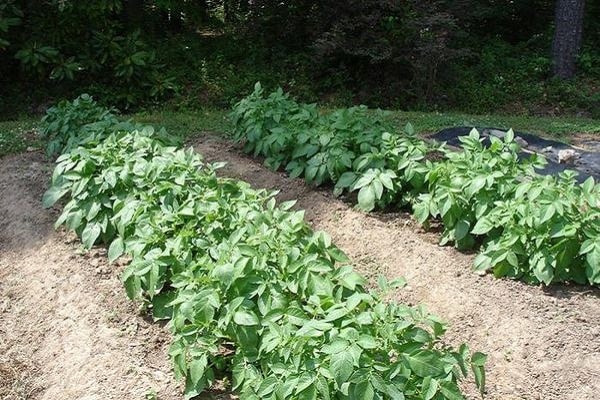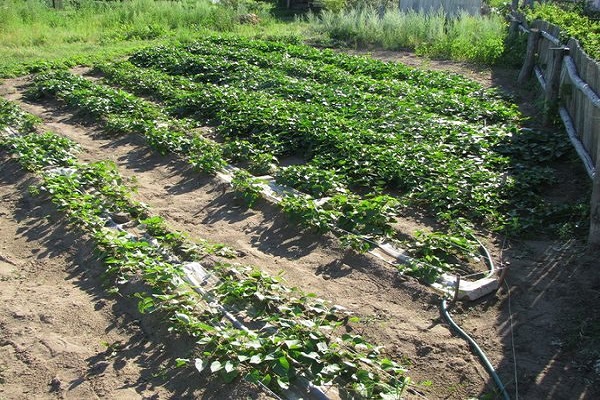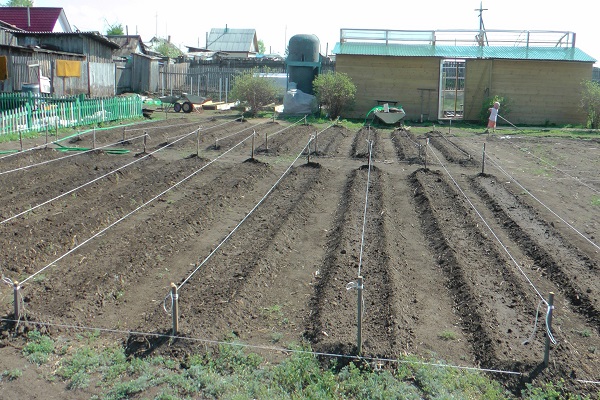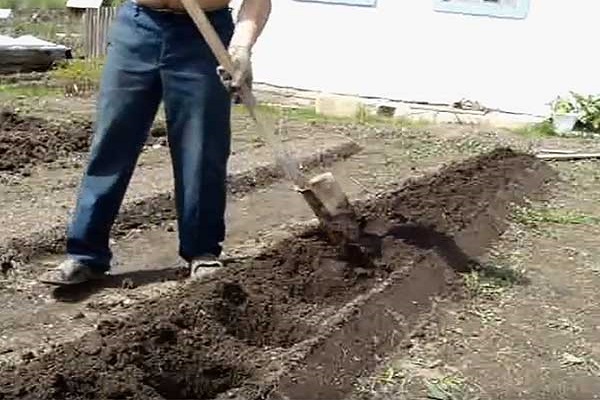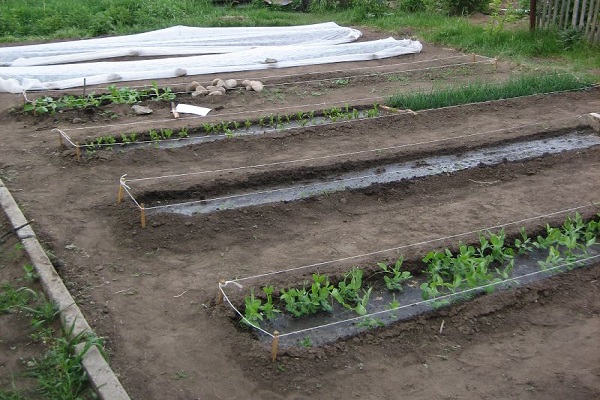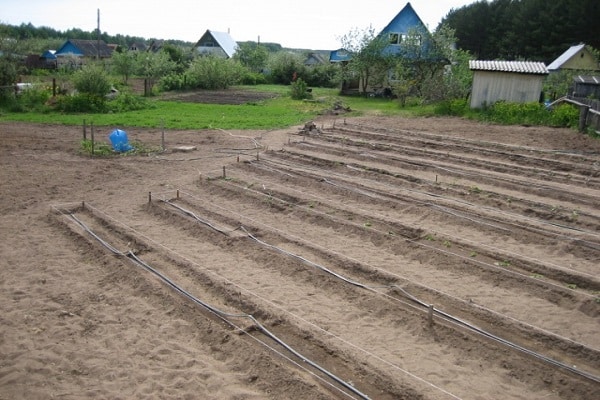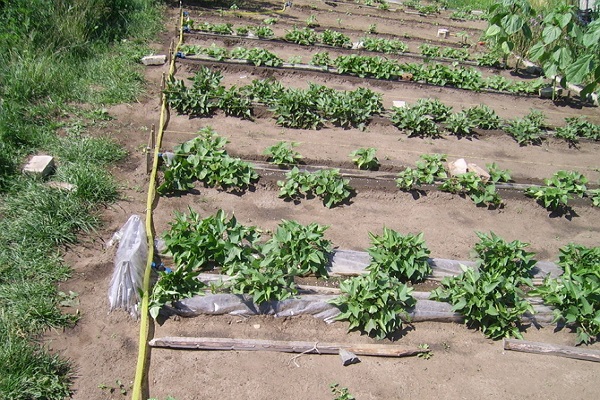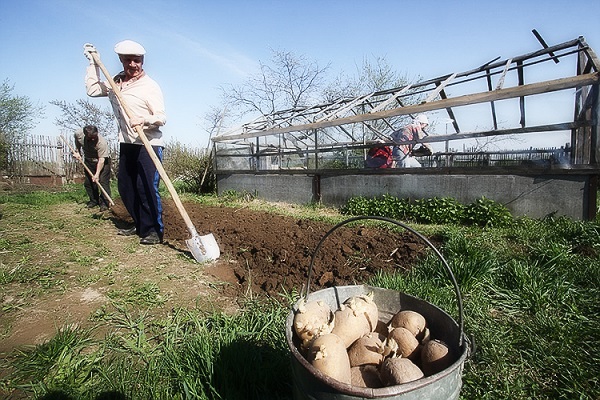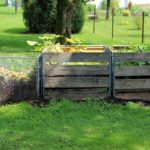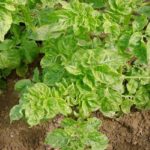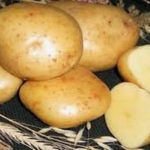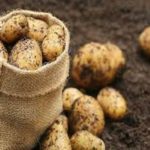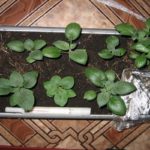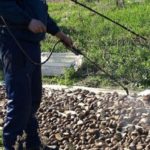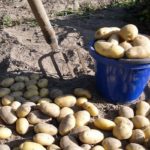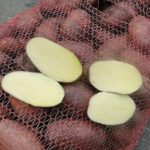Planting potatoes according to Mittlider is considered one of the most popular methods. Despite this, in every region, gardeners are inventing new options. Over time, they return to using proven techniques. Planting root crops in a garden bed according to Mitlider facilitates the process of growing vegetables.
- The general essence of planting and growing according to Mittlider
- Advantages of the method
- Disadvantages of the method
- Advantages of narrow beds
- Narrow ridges on uneven terrain and infertile lands
- The Mittlider Method and Organic Farming
- Mittlider method and hilling
- How to plant?
- Preparing the beds
- Preparing Potatoes
- Preparing tubers before planting in beds
- Preparing seedlings
- Planting scheme
- Site breakdown
- Planting tubers under straw
- Landing in the ground
- What types of potatoes are suitable?
- Mulching
- Fertilizers
- Watering
- Tuber care
- How to harvest?
- Top errors in this method
- Watering potatoes
- Selection of composition for feeding
- Poor mixing of fertilizers
- Poor bed alignment
- Use of additional elements in complex fertilizers
- Amendments in the version for Russia
- Efficiency of the method
The general essence of planting and growing according to Mittlider
The method is characterized by the creation of narrow beds. They take up little space and at the same time produce a yield that is 20% higher than the usual potato planting. Favorable weather conditions will help increase the number of tubers. Lighting and fertilization are also important factors.
Advantages of the method
The Mittlider method has several significant advantages:
- Growing potatoes is possible on any type of soil.
- Saving planting area and simultaneously increasing yield.
- When choosing this method, soil loosening and hilling are not carried out.
Thanks to wide row spacing with narrow beds, the plant has adequate nutrition, a large amount of heat and sunlight. Such conditions have a positive effect on the development of culture. In turn, the root vegetables grow large and tasty. Another advantage of the technology is that it can be used in regions with any climate.
Disadvantages of the method
Planting potatoes using this technology is unsuitable for use in areas located on northern slopes. Low-lying, wetlands and peat areas are not suitable. All this can contribute to the appearance of stagnant water. Beds with such conditions negatively affect the development of potatoes.
The Mittlider method requires the use of large amounts of fertilizer.Substances cost a lot of money, so a person should know this before planting. Not all gardeners have a plot on the sunny side. If a shadow falls on the soil, the yield automatically decreases by 4 times. The potatoes themselves are saturated with nitrates.
Advantages of narrow beds
Narrow beds are an excellent solution for gardeners with a small plot of land. They alternate with wide row spacing. This provides the bushes with good lighting. Thanks to this, it grows actively and brings a large harvest. Also, a narrow bed makes it easy to apply fertilizer.
Narrow ridges on uneven terrain and infertile lands
Uneven land is not suitable for growing potatoes using the Mittlider method. First of all, they make caring for bushes in the garden inconvenient. If a person ignores this rule and makes many mistakes, the yield level decreases. Infertile soil is not a problem, because the method involves the use of fertilizers to provide adequate nutrition to potato tubers.
The Mittlider Method and Organic Farming
People who use this potato growing system often return to organic farming. One of the main features of Mittlider is frequent watering. As a rule, problems begin at this stage. Some gardeners are limited in this regard.
Before growing potatoes according to Mittlider, you need to be fully prepared and confident in your own abilities.
The Mittlider system makes it possible to get a harvest instantly. This does not take into account the suitability of the site. If the method is abandoned, the yield is significantly reduced, and the bed with soil becomes saline. You need to have a reliable water source nearby.Organic farming implies careful treatment of the soil and is designed for several years; the Mittlider method does not provide this.
Mittlider method and hilling
The advantage of the system is that there is no need to carry out the hilling procedure. It is very comfortable. Instead, potatoes need a lot of fertilizer. In addition to hilling, there is no need for loosening.
How to plant?
Before planting potato tubers, you need to pay attention to many points. Not only root crops need preparation, but also beds. If necessary, the gardener plants tubers to obtain seedlings. In addition, they form a land plot on which the planting will take place.
Preparing the beds
Before preparing the beds, you need to select a suitable plot of land for potatoes. It should be dug up so that it is level. Then remove roots from old plants and weeds. Mark and form narrow rectangular beds. They should be located from north to south. Add fertilizers to the soil. Rake each bed from the sides, forming sides at least 10 cm high. Thanks to this approach, moisture in the ground is retained much longer.
Preparing Potatoes
Large root crops are chosen for planting, since small ones are not suitable in this regard. The selected vegetables must be completely healthy. Potatoes can be planted in beds on a garden plot or in boxes. In the second case, you will have to replant them.
A person can pre-plant potatoes in boxes. Transplanting young shoots at the beginning of the growing season stimulates their growth and promotes full development. The type of planting makes it possible to dig up root crops from the soil before the main harvest.
Preparing tubers before planting in beds
Before planting, the tubers undergo a small but mandatory preparation:
- They are placed in water whose temperature ranges from +50 to +60 °C. Leave it in this form for 20–25 minutes.
- Then it is removed from the water and placed for 7–10 minutes in a solution of copper sulfate or potassium permanganate.
- The tubers are laid out in one layer in shallow boxes and taken outside into the sun's rays.
Potatoes can remain this way from a couple of days to a week or more. All the time it must be sprayed with a solution prepared by mixing superphosphate with water. As soon as eyes appear on the tubers, they are cut into pieces. Each of them must have a sprouted eye.
Preparing seedlings
The bottom of the boxes is sprinkled with sawdust so that the layer is at least 3-4 cm. A solution of copper sulfate is poured on top of them (0.2% is enough). The container is filled with vegetables close to each other. Sprinkle sawdust again on top, maintaining a layer thickness of 1.5 to 2 cm.
Boxes with potatoes are transferred to a room with a temperature of +13–15 °C. After 8–9 days, the root crops will be covered with thick, but short sprouts. Small roots will also appear. Before planting, approximately 2–2.5 hours before planting, the tubers are watered with complex fertilizer. Potatoes don't last very long in boxes. If the roots grow very long, they may be damaged during transplanting into the beds.
Planting scheme
The scheme for planting potatoes in beds according to Mittlider is very simple. In this case, you must be careful and strictly follow all instructions. First of all, familiarize yourself with each stage and only then proceed to its implementation. Ease of care and the amount of harvest depend on this.
Site breakdown
Before planting vegetables, it is important to choose a site and properly prepare the beds.Following simple instructions will help eliminate any mistakes on the part of the gardener and perform all the work efficiently. List of stages:
- Choose a location with direct sunlight.
- Then follow all the recommendations for forming potato beds that were described above.
- The distance between them should be no less than 70 cm and no more than 1 m. The length of the bed itself is 9 m and the width is 45–50 cm.
This scheme was not chosen by chance. Thanks to the layout, each bush receives enough light throughout the day.
If the land has a slope and it cannot be leveled, the beds are arranged in the form of steps. During the formation of such a bed, holes for potatoes are dug in a checkerboard pattern. The space between them is only 30 cm. The recommended depth is from 7 to 12 cm.
Planting tubers under straw
Many gardeners consider such a procedure as planting potatoes under straw to be important. It protects not only root crops, but also the soil from bad weather conditions. Thanks to the layer, the earth retains moisture and heat well. Weeds in the beds grow several times slower or disappear completely.
The bush itself grows without any delays and at the same time develops well. Straw not only has a protective function for potatoes, but also saturates the soil with useful organic matter. You need to lay the straw in a thick layer, not sparing it. At first, only 9 cm will be enough. Over time, the straw settles and the thickness decreases, so additional amounts are laid on top.
Landing in the ground
You can proceed to the stage of planting on the beds after all the preparatory work. Before placing potatoes in the hole, it is filled with fertilizer. It is enough to pour 1 tbsp into the hole. l vermicompost. After this, you can put the root vegetable on top.
Making sure that the eyes are pointing upward is a must. When filling the hole with soil, be careful not to damage the eyes or break them completely. Under no circumstances should you dig up soil between potato beds. The scheme can be used for many years, so next year the planting site does not change.
What types of potatoes are suitable?
Any variety of vegetable is suitable for growing potato tubers using the Mittlider method. In this case, the maturation period is not taken into account. Depending on the desired result, early, mid-season or late are chosen. Gardeners who have tried the method at least once claim that it is preferable to plant zoned potato varieties. Regardless of the variety chosen, the same fertilizer is used.
Mulching
The procedure helps protect young bushes and promotes their full development. It has been noticed that mulching helps the crop grow faster. For the procedure, humus, crushed bark, compost, reed and finely ground grass are used. The prepared composition has a beneficial effect on the soil, increasing its content of organic substances. The layer should cover the potatoes from 5 to 10 cm.
Mulch thins over time as a result of precipitation and regular watering. In this case, the mulching procedure is repeated.
Fertilizers
The Mittlider system recommends 2 proven mixtures for feeding:
- composition No. 1;
- composition No. 2.
In the first case, the fertilizer is prepared by mixing 40 g of boric acid with 5 kg of dolomite flour. On average per 1 sq. m area, no more than 100 g of mixture is consumed. To prepare another composition, take 1.5 kg of ammonium nitrate, 0.5 kg of magnesium sulfate, 5 g of molybdic acid, 0.5 kg of ammophos.5 g of boric acid and 1 kg of potassium sulfate are also added to these components. For 1 sq. m only 50 g of substance is consumed.
During the first feeding of potato tubers, two fertilizers are used simultaneously. When digging the soil, scatter the mixture prepared according to the first recipe. Sprinkle fertilizer No. 2 on top. The second fertilizing is carried out when the sprouts reach a height of 15 cm. The third fertilizing procedure occurs during the period of formation of flower buds on large bushes. To avoid burning the potato roots, fertilizers must be scattered in the center of the bed.
Watering
Potatoes grown using the Mittlider method are very sensitive to dry soil. To ensure that the bushes do not need nutrition, it is necessary to water them every day. For this purpose, use a hose or do drip irrigation. When using a hose, the water flow is directed under the roots. Watering in the beds is carried out throughout the development of potato bushes, and stops after the flowers fade.
Tuber care
After planting potatoes, the vegetable needs careful care, including regular fertilizing, constant watering, and removal of weeds. It is important to ensure that the soil does not dry out under the potato bushes. Each plant should receive the same amount of water and fertilizer in the garden. Fertilizing must be done before germination. Then another and a third are carried out, while the bushes in the beds also do not need hilling.
How to harvest?
Root crops should be dug up in a timely manner, without leaving them in the soil for a long time. You cannot remove them ahead of time, as there is a risk of collecting green root vegetables. Late harvest always brings rotten or wilted potatoes.Dried tops in the garden are an indicator of the ripeness of the vegetable. Unfortunately, this is not always the case.
Harvest from the beds at the end of August and until the beginning of September. These are the optimal dates by which gardeners are guided. To finally verify the maturity of the root crops, dig up several tubers. The large size of the potato and its thick skin indicate that it is time to start harvesting.
Potato harvesting carried out using a shovel or walk-behind tractor. The second option is suitable for people with a large plot of land. After harvesting the vegetable, tops remain in the beds. It must be removed from the beds and burned so as not to harm the next year’s harvest. Potato branches may contain fungus or other pests that provoke the development of various diseases.
It is better to dig up root crops in dry and sunny weather. This is necessary so that the tubers dry out under the sun and rays and are ventilated. Collect from the garden in boxes or other convenient containers, cleared of soil residues. Suitable conditions for storing potatoes are temperatures from +4 to +5 °C.
Top errors in this method
Simple rules are easy to follow, but this is far from true. There are people who make minor mistakes in care. At first glance, they may seem harmless. At best, the harvest decreases, and at worst, the potatoes disappear completely.
Watering potatoes
Some gardeners apply fertilizers to the beds, but the yield does not increase. This has to do with watering. If the tubers are watered no more than 2 times a week, the substances in the compositions do not have time to dissolve. Fertilizers accumulate, which soon leads to a high concentration of substances, after which the potato bushes are burned.
Mittlider advises stocking up on plenty of water. If it is not possible water the potatoes daily, or at most every other day. The soil should always remain moist. The level of watering depends on precipitation. If a large amount of moisture falls, watering is stopped for a while.
Under no circumstances should you loosen potato beds. Mittlider planting places the roots close to the surface of the ground. If you loosen it, you can damage the root system, which also affects the harvest. Many people forget about this and make a big mistake.
Selection of composition for feeding
Dolomite flour cannot be added to soil that has alkaline characteristics. This way you can only harm it, as this will cause the bushes to die. When preparing the mixture according to recipe No. 1, gypsum is taken instead of this component. In case of acidic soil in potato beds, you can safely use chalk, dolomite flour or crushed limestone as fertilizer.
Poor mixing of fertilizers
It is important to distribute fertilizer evenly throughout the entire plot of land. Inexperienced gardeners scatter mixtures on the ground and simply turn it over while digging. With this approach, the substances will not be able to mix evenly with the soil. Fertilizers will accumulate in certain places and this will affect the potato harvest.
Poor bed alignment
The slope of the bed negatively affects not only the growth of bushes, but also the future harvest. On one side, the soil will constantly dry out, and on the other end of the beds there will be stagnation of moisture. In this case, the uniform application of fertilizers will be disrupted. Beneficial substances accumulate in a certain area, which is very bad.
To level the soil, use a building level and a block.If there is a strong slope, the bed is divided into several sections and only after that the angle of inclination is determined. This allows you to make the area for potatoes even.
Use of additional elements in complex fertilizers
When preparing fertilizer, mistakes are also made. Many gardeners buy Mag-Bor to add magnesium sulfate to the mixture. Moreover, the powder also contains boron. If boron was previously added, there may be an excess of it in the soil. Such points must be taken into account in advance before preparation. fertilizers for potatoes.
When preparing the mixture for fertilizing according to recipe No. 2, you should not buy complex mineral fertilizers. They contain not only the main elements, but also iron and other trace elements. It is better to purchase each substance separately. And if this is not possible, carefully study the composition of the mixture and do not ignore the presence of any component.
Amendments in the version for Russia
Based on the Mittlider method, other potato planting schemes. The Russian version, instead of the recommended fertilizers, involves the use of a tincture of chopped herbs and water. Properly selected fertilizers help in the development of bushes. Due to photosynthesis, its self-purification occurs.
This fertilizer option is suitable for areas with beds located in the shade. Herbal tincture becomes an excellent solution for beds with moderate watering. Poor conditions for potatoes can result in the accumulation of nitrates in the tubers. In this case, fertilizer based on greens will help.
Efficiency of the method
Gardeners who used the Mittlider method claim that potato yields increased by 20–25%. The tubers have many large-sized roots. At the same time, the correct shape and the absence of curved potatoes are noted. The dense peel covers the juicy and elastic pulp.
A pattern has been noticed: if a person has tried the Mittlider technique, he does not want to return to growing vegetables in the traditional way.
Mittlider stands out for its original technique of forming beds, preparing holes and potatoes. Gardeners who decide to try the method for the first time will first have to try. If everything is done correctly, growing will be easier every year and no difficulties will arise. It’s also good that you don’t need to choose special potato varieties. According to Mittlider, it is equally effective to plant early, middle and late.

